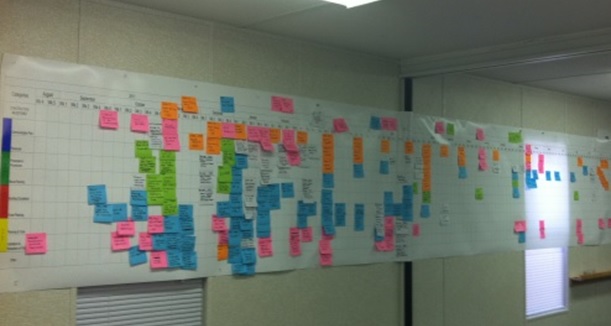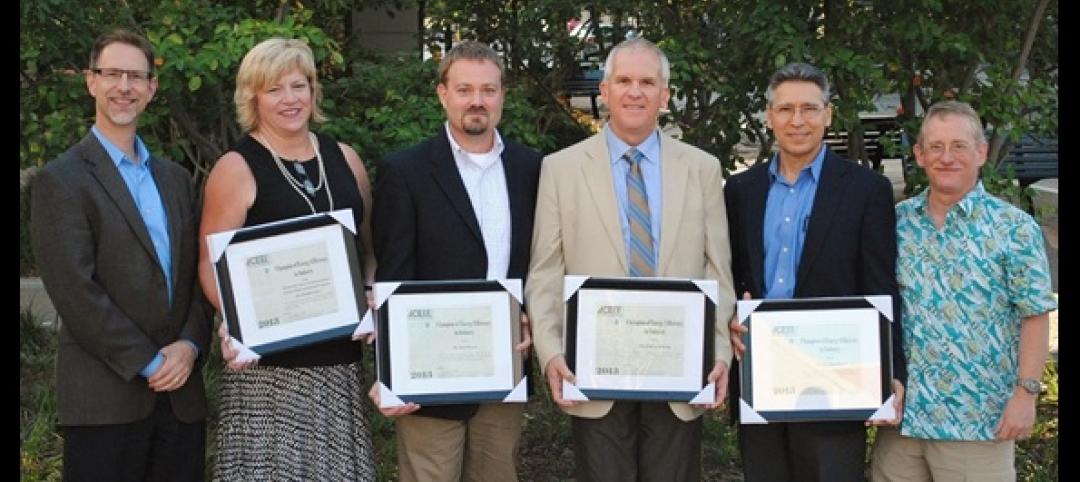In the ever changing world of technology and innovation, we now have tools that are designed to increase our productivity and communication. This move toward a “world is flat” format of conducting business is constantly evolving and thus communication and collaboration must continually be enhanced.
Capital facility projects will always require expertise from either local specialists or industry leaders within a specific field. Forming a collaborative environment and cohesive team, due to potential location and cost issues, can be challenging at best. Only by harnessing the opportunities available through technology and processes will project team members increase their chances for establishing cohesiveness to ensure project success.
THE LOCKER ROOM CONCEPT
Keeping with the “world is flat” format of conducting business, it is not uncommon for a capital facility project to have nonlocal team members involved from remote cities. Obviously, having all local contractors would be ideal, but the skill and expertise required for a multimillion dollar healthcare project is not always available locally. Identifying opportunities for team interaction that provide the most value to the client is critical to project success.
For example, projects typically provide onsite offices with various meeting rooms, yet these spaces do little to accommodate and promote a true team atmosphere. Wouldn’t it make sense to create an environment where all “players” on the team could collocate, similar to a football locker room?
Imagine applying the team locker room concept and dynamics to the design and construction of a building project, thus creating a "Project Big Room." Much like a football team in a locker room developing their game plan for an upcoming season, the entire project team (architect, engineers, contractors, and subcontractors) could use a similar philosophy and approach to design, plan, and construct a capital project.
Collocating in a Big Room environment fosters collaborative behavior that encourages brainstorming and innovation. Teams within the Big Room can be broken into position groups, much like linebackers and quarterbacks. Groups focused on various aspects of the project such as site, mechanical, structural, interiors, enclosure, etc., are formed, very early on, to tackle different issues and challenges. Each group is tasked with identifying solutions to reduce time, waste, and cost to the benefit of the project.
For example, by working together early in the process, the enclosure group can eliminate duplication of efforts. Instead of the architect developing detailed drawings that would then be altered or redone by the fabricator, they merely complete concept drawings which are shared with the group and then the fabricator completes the detailed design. All meetings and interactions take place in the common space that is shared with the other groups thus opening the lines of communication and input.
A meeting cadence is established to ensure team members are communicating on a daily basis, whether in person or by phone, as opposed to once or twice a month.
If you are thinking this sounds a lot like integrated project delivery, you are right. But, the Big Room does not require an Integrated Form of Agreement. It harnesses the philosophy and culture without the contract.
GAME WEEK
Interaction in the Big Room would be structured very similar to preparations for the game of the week. An onsite team meeting is scheduled for the beginning of the week to help structure the goals and activities ahead. This meeting allows the various groups to report on their progress and to share their ideas for the upcoming week. It is imperative that the entire group understand how their individual parts fit into the bigger picture and to collaborate to achieve efficiencies. From there, teams “huddle” each morning for five or 10 minutes to touch base and stay informed.
One of the tools used in the Big Room to create the master schedule is Pull Planning. A Pull Planning session outlines all activities to enable a global perspective of each group’s responsibilities. Scheduling, utilizing Pull Planning, requires establishing specific milestones and then pulling back from identified dates to generate event timelines. This method of scheduling is challenging at first, but after practicing, the expectations of pulling rather than pushing toward a milestone start to drive out waste in your project schedule. With a milestone schedule and a pull plan in place, the teams can then work through their tasks and resolve any issues in their focused groups.
An additional tool that is helpful in a Big Room structure is the use of A3 methodology for issue resolution and decision making. An A3 is a “Lean” tool used to conduct a thorough analysis of a current state. It helps to create a one-page story on a specific topic or issue that makes it easy for any member of the entire team to read and understand what the group is working to resolve. Regularly posting A3 documents on the walls of the Big Room is a great way to create further collaboration across different focused groups. An example of the value of an A3 is apparent when analyzing the benefits of different building materials on a project.
Referring back to our previously mentioned Enclosure group, an A3 could be used to evaluate brick verses glass curtain wall for the building exterior. The A3, created by the enclosure group, would be reviewed by the structural group to determine cost savings or impact between the two. While the enclosure group feels there are advantages to choosing brick, the structural group identifies the disadvantages due to the added weight and required supports that would drive up the cost on their scope of work.
Other groups also have the opportunity to provide input prior to final decision making. The goal is to allow the A3 to tell a story that ultimately identifies a solution that balances value, cost, and innovation.
As teams outline challenges and identify steps for resolution, A3’s are posted so other groups that may be impacted by these changes can review the plan and react if necessary. These discussions save design effort, improve the quality of the project, and ultimately deliver a savings to the project. During the entire planning week, each group strategizes in the Big Room and posts their progress which enhances collaboration much more so than meeting behind closed doors.
At the end of the week, a meeting similar to a final walk through before the big game is conducted. Each group presents their weekly accomplishments and discusses any remaining obstacles. A final report presented to client leadership provides insight as to potential changes or project savings.
During planning, it can be determined how much repetition is needed on the project. For example, maybe the entire team is brought together in-person every other week or maybe just once a month. One nice feature of using a “flat business” platform is that technology has created ways for teams to have a Big Room that conceivably meets every week, alternating in-person and virtual meetings. You can keep the same group structure and meeting cadence whether in-person or through conference calls and web conferencing.
While in-person meetings are more effective, keeping the cadence of the group planning virtually creates a stronger focus on the project and in turn makes the in-person team meetings run more smoothly. The true goal of this collaborative focus is to huddle daily and meet every week with an entire team focused on accomplishing as much as possible during the time the groups are together in the Big Room.
CONCLUSION
On a major capital facility project, team performance can make or break the ultimate outcome. Engaging the most knowledgeable experts and skilled talent is critical in delivering the most value to the client. However, these vital team members may not be locally based which can pose challenges due to onsite availability.
Implementing collocation via the Big Room concept will remove silos, ensure a cadence for daily communication, promote collaboration and elevate your chances for success. When setting up your next project, you may want to consult your favorite football team’s gameday strategy for inspiration.
About the Authors
Stephen Powell is a Consultant and Magnus Nilsson is Senior Consultant with CBRE Healthcare.
Related Stories
| Jul 30, 2013
Better planning and delivery sought for VA healthcare facilities
Making Veterans Administration healthcare projects “better planned, better delivered” is the new goal of the VA’s Office of Construction and Facilities Management.
| Jul 30, 2013
Healthcare designers get an earful about controlling medical costs
At the current pace, in 2020 the U.S. will spend $4.2 trillion a year on healthcare; unchecked, waste would hit $1.2 trillion. Yet “waste” is keeping a lot of poorly performing hospitals in business, said healthcare facility experts at the recent American College of Healthcare Architects/AIA Academy of Architecture for Health Summer Leadership Summit in Chicago.
| Jul 30, 2013
Top Healthcare Sector Architecture Firms [2013 Giants 300 Report]
HDR, HKS, Cannon top Building Design+Construction's 2013 ranking of the largest healthcare architecture and architecture/engineering firms in the U.S.
| Jul 26, 2013
HDR acquires Sharon Greene + Associates
HDR Engineering, Inc. has acquired the business and assets of Sharon Greene + Associates, a firm specializing in transportation economics and financial analysis with offices in California and Denver.
| Jul 26, 2013
How biomimicry inspired the design of the San Francisco Museum at the Mint
When the city was founded in the 19th century, the San Francisco Bay’s edge and marshland area were just a few hundred feet from where the historic Old Mint building sits today. HOK's design team suggested a design idea that incorporates lessons from the local biome while creating new ways to collect and store water.
| Jul 25, 2013
3 office design strategies for creating happy, productive workers
Office spaces that promote focus, balance, and choice are the ones that will improve employee experience, enhance performance, and drive innovation, according to Gensler's 2013 U.S. Workplace Survey.
| Jul 25, 2013
How can I help you?: The evolution of call center design
Call centers typically bring to mind an image of crowded rows of stressed-out employees who are usually receiving calls from people with a problem or placing calls to people that aren’t thrilled to hear from them. But the nature of the business is changing; telemarketing isn’t what it used to be.
| Jul 25, 2013
First look: Studio Gang's residential/dining commons for University of Chicago
The University of Chicago will build a $148 million residence hall and dining commons designed by Studio Gang Architects, tentatively slated for completion in 2016.
| Jul 25, 2013
Resilience: the hallmark of a successful practice
The key to a firm’s future success has less to do with avoiding trouble than bouncing back from it.
| Jul 25, 2013
ACEEE presents the 2013 Champions of Energy Efficiency in Industry Awards
The American Council for an Energy-Efficient Economy (ACEEE) presented four Champion of Energy Efficiency Awards last night at its Summer Study on Energy Efficiency in Industry.


















